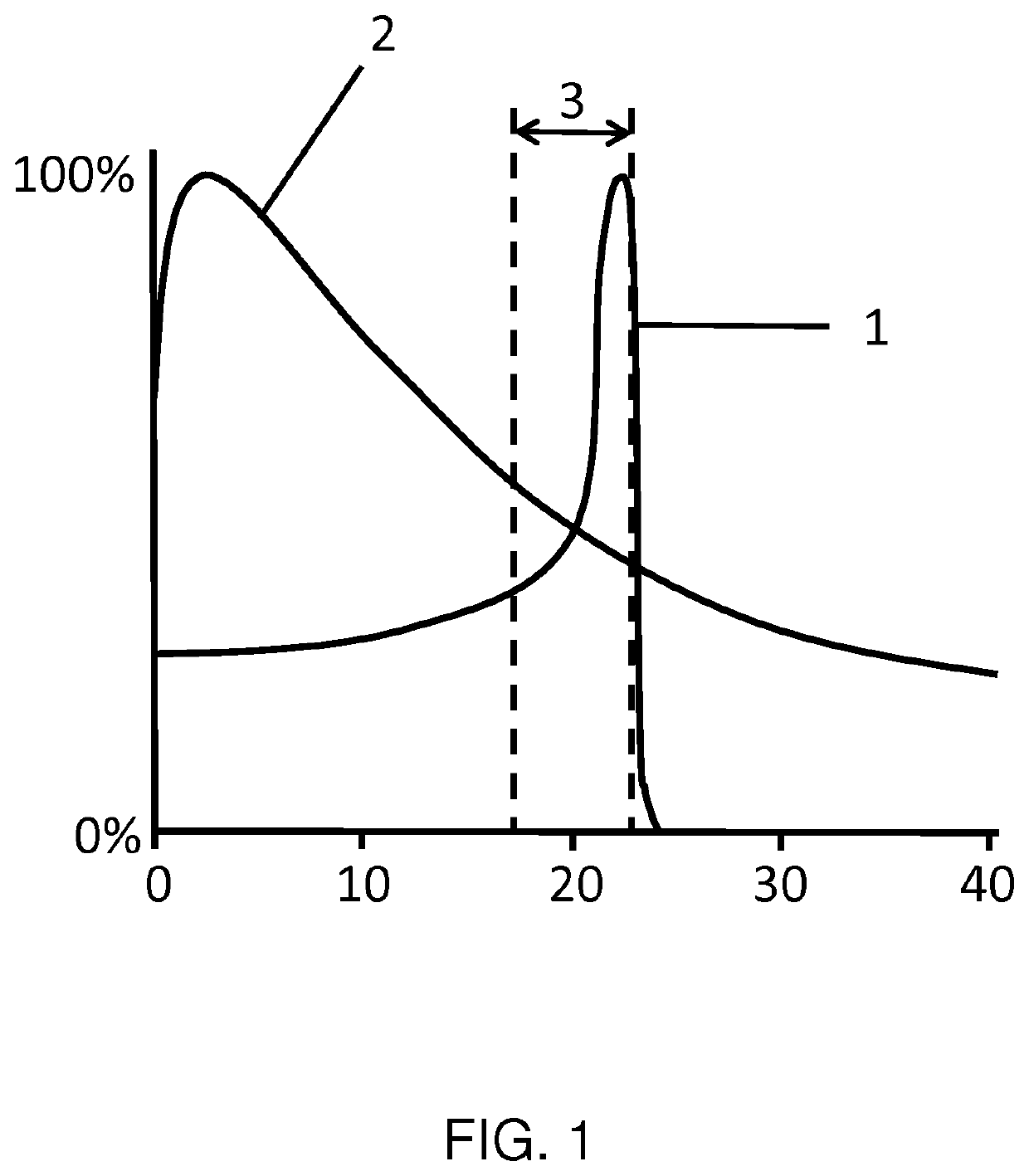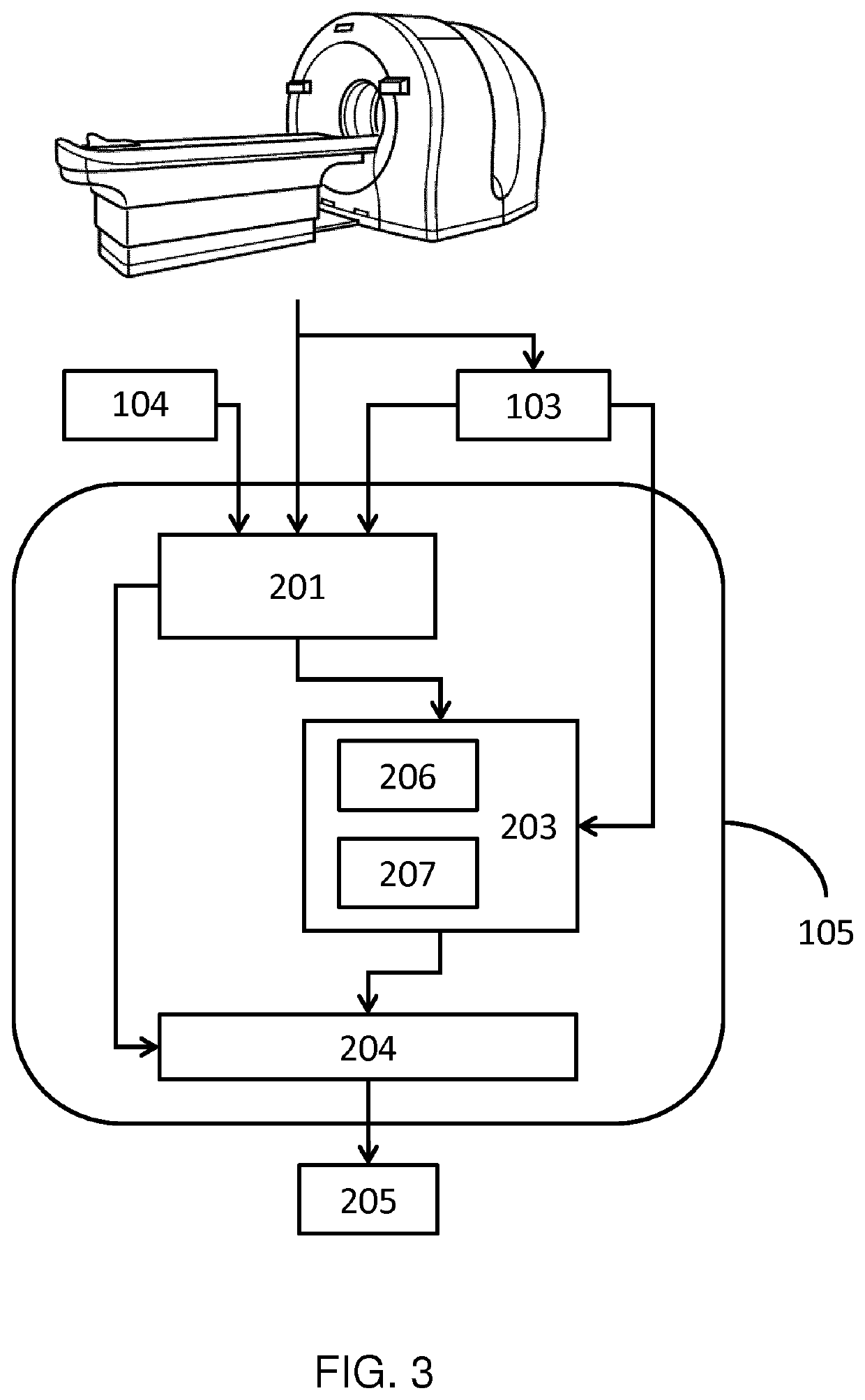Intensity modulated proton therapy plan optimization for localized plan deficiencies
- Summary
- Abstract
- Description
- Claims
- Application Information
AI Technical Summary
Benefits of technology
Problems solved by technology
Method used
Image
Examples
Embodiment Construction
[0035]FIG. 1 illustrates the shape of a Bragg-peak for a proton beam 1. Beam intensity is shown as a function of penetration depth. For comparison, the intensity profile of a conventional X-ray beam 2 used for radiation therapy is also shown. In this figure, the vertical axis shows percentage of intensity and the horizontal axis shows penetration depth in cm. The target structure 3 is located between the dashed lines around 20 cm beneath the patient's skin. As can be seen in the figure, the proton beam 1 delivers a high intensity within the target structure 3 and a lower intensity at and directly beneath the skin. In particular when compared to the conventional X-ray beam 2. FIG. 1 also shows the sharp fall-off of the intensity of the proton beam at the right-hand side of the target structure 3. This shape allows for high precision of delivery compare to the conventional X-ray beam 2, but it also has particular sensitivity to errors such as range and setup uncertainties. In case the...
PUM
 Login to View More
Login to View More Abstract
Description
Claims
Application Information
 Login to View More
Login to View More - R&D Engineer
- R&D Manager
- IP Professional
- Industry Leading Data Capabilities
- Powerful AI technology
- Patent DNA Extraction
Browse by: Latest US Patents, China's latest patents, Technical Efficacy Thesaurus, Application Domain, Technology Topic, Popular Technical Reports.
© 2024 PatSnap. All rights reserved.Legal|Privacy policy|Modern Slavery Act Transparency Statement|Sitemap|About US| Contact US: help@patsnap.com










